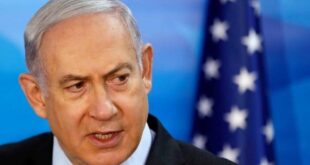The U.S. remains laser-focused on deterring conflict in the Indo-Pacific as China doubles down on its efforts to boost its military power and engage in increasingly provocative behavior, a senior Pentagon official said Monday.
Ely S. Ratner, assistant secretary of defense for Indo-Pacific security affairs, said as China continues to raise the stakes in the region, the Defense Department has responded with a steady hand to ensure competition does not become conflict.
“We’re not losing sight of the fact that the department has identified China as the top pacing challenge,” Ratner said. “We’re investing focused capabilities on solving operational problems associated with that.”
He added that, in response to China’s military buildup, the DOD has remained focused on developing new operational concepts, deepening relationships with regional allies, and modernizing its force posture in the region.
Ratner, who was joined by Michael S. Chase, deputy assistant secretary of defense for China, Taiwan and Mongolia, offered his remarks during a discussion of the Pentagon’s recently published 2023 China Military Power Report. The event was hosted by the Atlantic Council in Washington.
The annual report on China, known formally as the People’s Republic of China or PRC, was released by the Pentagon last week. It details China’s national, economic and military strategy, current capabilities and future modernization goals pursuant to that country’s aim of reshaping the international order.
According to the report, over the past year China adopted more provocative behaviors in the Indo-Pacific while accelerating its military buildup in a bid to project power abroad.
“At the same time, the PRC largely denied, cancelled and ignored recurring bilateral defense engagements, as well as DOD requests for military-to-military communication at multiple levels,” the report reads.
According to the report, China is seeking to modernize its military, the People’s Liberation Army, or PLA, across all domains of warfare in pursuit of its aims of reshaping the global power balance.
China’s military has focused on the rapid development of its nuclear, space and cyberspace capabilities. DOD officials estimate that the Chinese had more than 500 operational nuclear warheads as of May 2023, and it was on track to exceed some previous projections.
“Compared to the PLA’s nuclear modernization efforts a decade ago, current efforts dwarf previous attempts in both scale and complexity,” the report reads, adding that DOD officials asses that China will likely reach 1,000 operational nuclear warheads by 2030.
China has also focused on expanding its naval capabilities to project power by sea. It has the largest navy in the world, in terms of number of ships and submarines, with a total battle force of 370 ships and submarines. That includes 140 major surface combatants, according to the report.
More broadly, U.S. officials also assess that China’s military has sought to modernize and improve its ground, air, strategic and joint-support forces and has undertaken key structural reforms to strengthen its ability to conduct joint operations.
“The PLA is aggressively developing capabilities to provide options for the PRC to dissuade, deter, or, if ordered, defeat third-party intervention in the Indo-Pacific region and to conduct military operations deeper into the Indo-Pacific region and globally,”
The report also raises concerns over the risky and aggressive intercepts by China’s military of U.S. aircraft operating in international airspace in accordance with international law.
“Between the fall of 2021 and fall of 2023, the United States has documented over 180 instances of PLA coercive and risky air intercepts against U.S. aircraft in the region — more in the past two years than in the previous decade,” the report reads.
“Over the same period, the PLA has conducted around 100 instances of coercive and risky operational behavior against U.S. allies and partners in an effort to deter both the United States and others from conducting lawful operations in the region,” the report continues.
That concerning behavior on the part of China’s military was part of a “coordinated campaign,” Ratner said.
“This was a variety of different behaviors,” he said. “It was air intercepts that were coming in too fast, that got too close, that brandished weapons, that engaged in risky and dangerous maneuvers around U.S. aircraft — that, we think, is important to be highlighting because they really are dangerous.
“They put lives at risk, and they risk also potential crises that could lead to inadvertant conflict,” Ratner said.
Chase added that the concerning rise in intercepts further underscores the importance of resuming regular, military-to-military communications between the U.S. and China at the operational level as soon as possible.
He said that while the report focuses on China’s buildup, it was also important to underscore the United States’ “very strong body of work in terms of posture, capabilities, operational concepts [and] working closely with allies and partners in terms of what we’re doing in response.”
“We believe deterrence is real and deterrence is strong, and we’re working every day to keep it that way,” Ratner said.
 Eurasia Press & News
Eurasia Press & News




